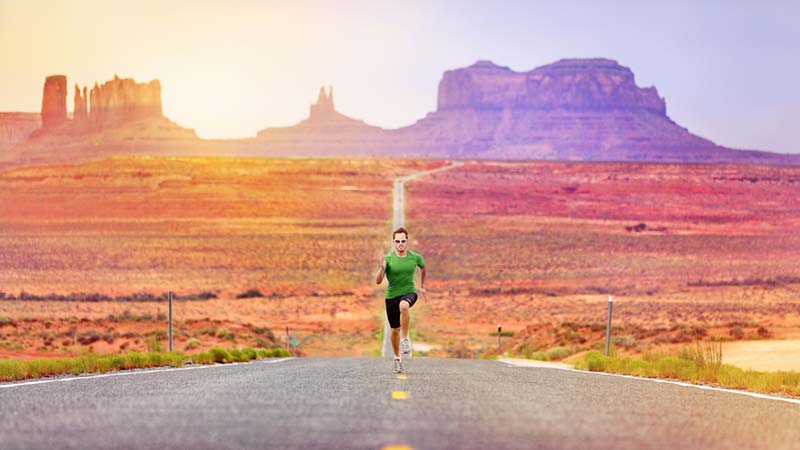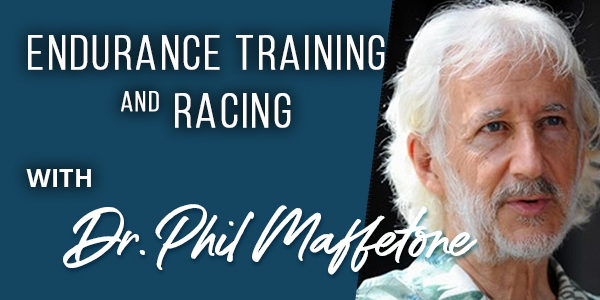
7 smart ways to quicker times
It would be great if the scientific basis for improving athletic performance — particularly speed — were clear, but it’s not. That’s why there are so many different approaches and coaching styles.
Pulling together what we know scientifically about physiology into a program that works well for an individual is what makes this practice a true art form. When these two concepts are properly combined it often results in an athlete reaching their athletic potential without sacrificing health — the true definition of success. And it works for those in virtually any sport.
While most people think the only way to get faster is to train harder, nothing could be further from the truth. In fact this no-pain, no-gain plan often produces initial improvements that fall short of reaching full potential before giving way to illness, injury and burnout.
There’s a better way — and none of it involves any hard training, intervals or speedwork.
Here are seven of my favorite methods to successfully get faster. The reason these techniques work is that each can improve the body’s economy. Regardless of your chosen sport, the more efficient or economical your body moves, the faster you can train and race at the same heart rate. Running economy is a well-known example, and often measured by oxygen uptake. But as an assessment tool, heart rate is more practical for regular, daily use.
So try just one or try them all. You have nothing to gain but speed. The best place to start is with No. 1:
1. The Brain. The brain is responsible for controlling the body’s economy of motion, as well as other factors related to athletic performance. While the brain is often the most misunderstood and most neglected part of an athlete, it regulates, directly or indirectly, all the factors noted below. Improving brain function can allow all these other tips to fall into place, and conversely, many of these tips, especially nutrition, can improve brain function. Check out my article on “11 ways to improve brain function.” Bill Bowerman, co-founder of Nike and legendary coach, put it simply: “The idea that the harder you work, the better you’re going to be is just garbage. The greatest improvement is made by the man or woman who works most intelligently.”
2. The Twitch. Most athletes are familiar with slow and fast twitch muscles, referring to aerobic and anaerobic, respectively. For endurance events like long-course triathlons or marathons, most race energy comes from the aerobic system, which burns fat for energy. In fact, an Ironman triathlon victory is typically accomplished at around 70 percent of one’s VO2max. For a marathon this figure may be about 80 percent. By comparison, for those running 5K or 10K events it’s over 90 percent.
Given the predominant aerobic nature of these events, one of the most effective ways to get fast is obviously to train the body’s aerobic muscle fibers. In the textbook, Essentials of Exercise Physiology (2006, third edition), the co-authors, Drs. William McArdle, Frank Katch, and Victor Katch, state a well-accepted but often forgotten fact about training: “Activation of slow-twitch fibers produces greater efficiency than the same work accomplished by fast-twitch fibers.” Aerobic muscles are essentially more economical, fatigue-resistant, and burn fat for long-term fuel. Developing the aerobic system is best done using my MAF 180 Formula and the MAF Test.
3. Overreaching. The sweet spot of training means getting in enough volume (time and or miles) but not too much, and going fast but not too fast. This point is called overreaching, the point at which one maintains and increases fitness, but before the onset of overtraining, which results in injury, fatigue and poor performance.
Here’s my high-performance formula: Training = Workout + Rest
The most common reason for exceeding overreaching is too much hard training. These anaerobic, hard efforts can no doubt increase VO2max and lactate threshold, even while the athlete is drifting into overtraining. Unfortunately, what often happens is VO2max and lactate thresholds are pushed higher at the expense of economy, and performance suffers.
4. Muscle Balance. Working in harmony, muscles allow the athlete to move more effectively during any activity. But even a slight irregularity in the gait caused by an imbalance in muscles can slow you down. The neuromuscular system — the brain and muscles — regulates movement. And if muscle imbalance develops, gait problems follow. This may be due to running and cycling shoes that don’t fit perfectly, an unhealthy diet, or overtraining.
A separate muscle issue is strength. Traditional weight-lifting routines can often diminish aerobic function, impair gait, and reduce endurance, leading to sub-par economy and slower times. Instead, rely on workouts like my slow weights plan that don’t produce significant fatigue. Such a weight-lifting routine can strengthen without impairing the aerobic system or adding extra bulk (that extra weight can slow you down, too!).
5. The Feet. Our feet and lower legs allow us to harness the natural gravitational impact forces from hitting the ground while running or walking, turning that contact into additional energy. This unique energy-return system can be significant. But it won’t work well in feet that are dysfunctional, leading to slower paces. Muscle imbalance, overstretched tendons, inflexibility and other problems render many feet unable to obtain this extra energy. The main causes of poor foot function include shoes that are over-supported, thick-soled, and have outsized heels. These shoes also weigh more.
The results of tests performed by track coach Dr. Jack Daniels many years ago sheds light on how dramatic shoe weight could be. He tested runners on a treadmill using various weights added to shoes. Now associate professor of physical education at A.T. Stills College in Mesa, Arizona, Daniels demonstrated a significant reduction in running economy with added weight. For example, every 3.5 ounces of additional shoe weight translated to about an extra minute or more in the marathon. Yet almost all running shoes weigh between 5 and 10 ounces dry.
The best answer is for athletes to spend some time daily barefoot, and for those who are runners to include some barefoot running in their programs. In addition, finding the lightest-weight, least movement-impairing shoes is very important for both training and racing.
6. Healthy Foods. The foods we eat can directly affect training and race pace by improving fat-burning, balancing muscles, increasing circulation, and helping to build a better aerobic body. The most serious barrier to this endurance potential is refined carbohydrates (sugar and processed flour). Avoid them if you want to get faster.
This does not mean avoiding natural carbohydrates during a race, when consuming them can actually aid fat-burning. However, the less food added to your stomach during a race, the less likely your body will be slowed by indigestion, diarrhea or other GI upset. Conversely, the more aerobic function and fat-burning capability you develop, the less nutrient you’ll require during a race because you’ll access more of your stored body fat.
7. Altitude. For decades the saying, “sleep high, train low” was a mantra of endurance athletes using altitude training as a way to get faster. Living at higher elevations, such as 7-8,000 feet, can help improve one’s economy, while training at lower elevations, 4,000 feet or below, is best. For most recreational athletes, moving or traveling to high altitude to improve race performance is not practical. For those who want this altitude boost but live at lower elevations, a true altitude chamber (hypobaric chamber) may be effective and surprisingly more affordable. However, this does not guarantee results. That’s because the process requires a healthy body. A poor diet, for example, may not supply all the nutritional needs, such as iron, folic acid or protein, necessary for altitude living or exposure to increase quality red blood cells and better aerobic function.








